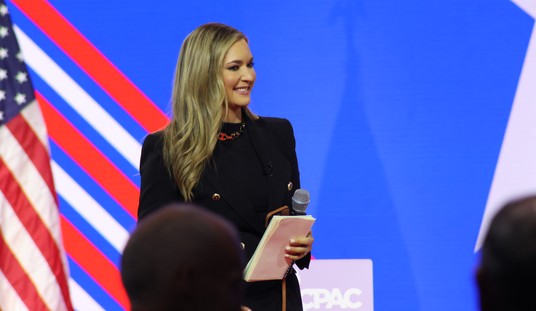Hey, I thought insurers were on board with raiding Medicare Advantage? After all, that’s what ObamaCare does to generate revenue for the ACA’s redistribution scheme. One of the supposedly cost-saving mechanisms within ObamaCare was a series of reductions to insurer reimbursements for their end of Medicare coverage. Suddenly, insurers are finding something about ObamaCare they don’t like:
The ad campaign is part of a lobbying and media blitz by the insurance industry to avoid cuts to their Medicare Advantage payments. The Affordable Care Act cut the Medicare Advantage program by $200 billion. The law and other policy changes cut the program by 6.5% this year.
Insurance officials say the cuts are already forcing insurers to cut their doctor networks, and they warn that further cuts will increase cost and limit access to seniors
“If the Medicare Advantage plan is cut once again, seniors are going to find out in October that their costs are going up, their benefits are being reduced and they have fewer choices of providers and fewer coverage options,” said Robert Zirkelbach, spokesman for the insurance industry trade group America’s Health Insurance Plans.
The ad warns, “We vote,” and that may be the big problem for the Obama administration and Democrats. Whatever cuts take place in reimbursements will get rolled out in October, right before the midterm elections — which the insurers think will help them convince Congress to reverse course:
Insurers believe that timing will help their cause. Most seniors will find out about the new rates during open enrollment in October — only weeks before congressional elections. And insurers are betting that lawmakers won’t want to be explaining to 14 million seniors why their health care costs more or their benefits have decreased.
Well, maybe, but that will take place at the same time that tens of millions of people get kicked out of group plans too, according to HHS’ own analysis of the employer mandate. Seniors, who by and large swing conservative in elections, may be the least of their worries at that point. Democrats and the White House will be more worried about losing younger workers whose small-business health coverage suddenly disappears, forcing them into the already-broken individual markets.
Besides, the Obama White House has a way to deal with the midterm crisis, which is to just unilaterally change the law. It did that with the employer mandate twice — once by postponing it until 2014, and then pushing the date back to mid-November in a fruitless attempt to postpone the consequences until after the election. (Businesses will be making these decisions in August and September, not when open enrollment in the Healthcare.gov exchange begins, something anyone with any experience in the private sector would already know.) HHS postponed another deadline this week:
The Department of Health and Human Services has pushed back yet another Obamacare deadline, this time extending the life of a federal insurance program that began in 2010 and was only supposed to continue until Dec. 31.
The Pre-Existing Condition Insurance plan (PCIP) was launched in 2010 to provide stopgap coverage for those that needed it until Obamacare officially launched. Health and Human Services (HHS) first pushed the date back to January 31 and announced Tuesday evening that they’ll now extend the coverage until March 31, the final day of Obamacare’s open enrollment period.
Similar to the exchanges, some states run their own versions of the high-risk pool program, while others are part of a federal program. PCIP currently covers less than 30,000 participants between states and federal branches.
“As part of our continuing effort to help smooth consumers’ transition into Marketplace coverage, we are allowing those covered by PCIP additional time to shop for new coverage while they receive the ongoing care and treatment they need,” HHS spokeswoman Erin Shields said in an email Tuesday.
The deadline delay is another tacit admission from the Obama administration that to date, Obamacare exchanges across the country haven’t performed well enough for those who need health insurance.
They’re not just moving deadlines. The White House is also moving goalposts, which has Ron Fournier frustrated — and asking whether the Obama administration will just call whatever happens success:
White House officials consistently—and accurately—argue that the most important metric for Obamacare’s success this year is the mix of young and old enrollees. But they’re backing away from their own goals for that mix.
Getting young people into the system is critical to holding down premiums, and therefore to keeping each state’s insurance market stable. Administration officials previously said their target was for young adults to make up about 38 percent of Obamacare enrollees. Now that standard is down to about 30 percent. Or maybe even 24 percent—where the mix stands now.
The Health and Human Services Department released its first age breakdown on Monday, showing that about 24 percent of Obamacare enrollees are between 18 and 34. Officials from HHS and the White House heralded the figure as a success because it makes an insurance “death spiral”—Obamacare’s worst-case scenario—appear all but impossible
The administration may well hit its initial 38 percent target, but it’s apparently abandoning that goal preemptively, declaring success just by avoiding the worst possible outcome. …
But, once again, administration officials are lowering their own standards for success—ditching targets they set or embraced, and redefining success as anything that’s good enough to avoid a total collapse. It was the White House that set the initial target of 38 percent enrollment for young adults. But officials wouldn’t stand by that figure this week.
Welcome to Hope and Change — changing metrics and deadlines, and hoping no one notices the disaster as it unfolds.







Join the conversation as a VIP Member